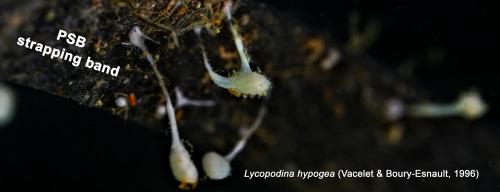Marine Pollution Bulletin ( IF 5.8 ) Pub Date : 2020-08-01 , DOI: 10.1016/j.marpolbul.2020.111501 A Santín 1 , J Grinyó 2 , M Bilan 3 , S Ambroso 2 , P Puig 2

|
Nowadays, there are an increasing number of reports of deep-sea accumulation of marine debris, often associated with a wide array of pernicious effects on benthic fauna. Nevertheless, there is still a huge knowledge gap regarding the interaction of benthic organisms and marine debris. In this paper, we report for the first time the colonization of plastic debris by the protected sponges Lycopodina hypogea. The sponges were discovered growing on plastic debris tangled with nylon ropes on the Blanes canyon (northwestern Mediterranean Sea). Over 30 individuals of L. hypogea were identified attached on ca. 10 cm2 plastic debris, an unusual feature for a species mostly known for low-density populations and a patchy distribution. The implications of this discovery are discussed, and it is suggested that marine debris might provide substrate for benthic species on otherwise unsuitable habitats, with its possible role as stepping-stones for deep-sea benthic connectivity needing further study.
中文翻译:

食肉海绵Lycopodina hypogea(Cladorhizidae)与海洋垃圾有关的首次报道,及其对深海连通性的潜在影响。
如今,越来越多的报道表明,海洋深处海屑堆积,通常与对底栖动物的各种有害影响有关。然而,关于底栖生物与海洋垃圾的相互作用仍然存在巨大的知识空白。在本文中,我们首次报道了受保护的海绵Lycopodina hypogea对塑料碎片的定殖。人们发现这种海绵生长在布勒内斯峡谷(西北地中海)上与尼龙绳缠结的塑料碎片上。大约有30多名L.hypogea个体被发现附着在ca. 10厘米2塑料碎片,这是一个以低密度种群和斑块状分布而闻名的物种的不寻常特征。讨论了这一发现的含义,并建议海洋垃圾可能为原本不合适的生境中的底栖生物提供底物,其可能作为深海底栖连通性的垫脚石发挥作用,需要进一步研究。



























 京公网安备 11010802027423号
京公网安备 11010802027423号